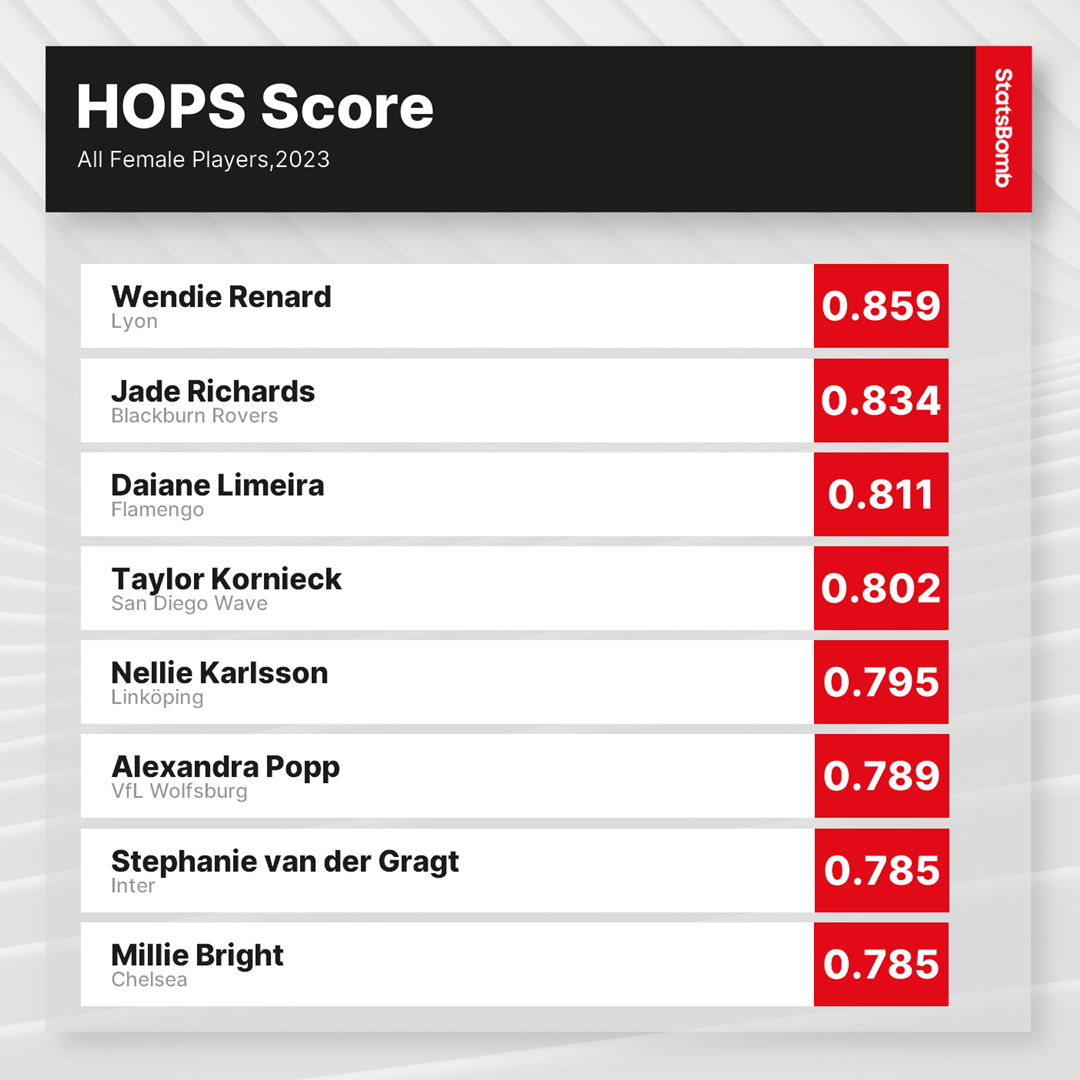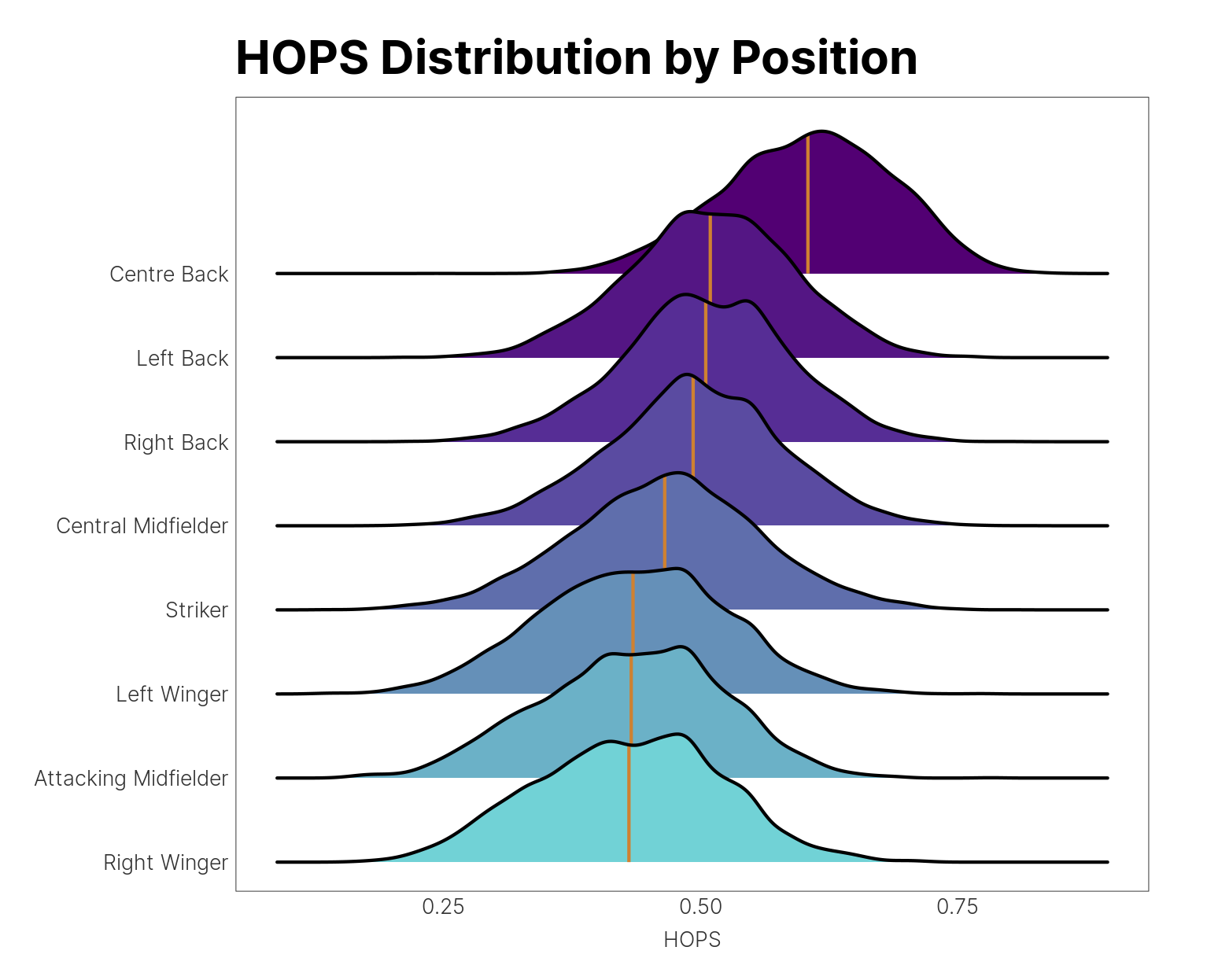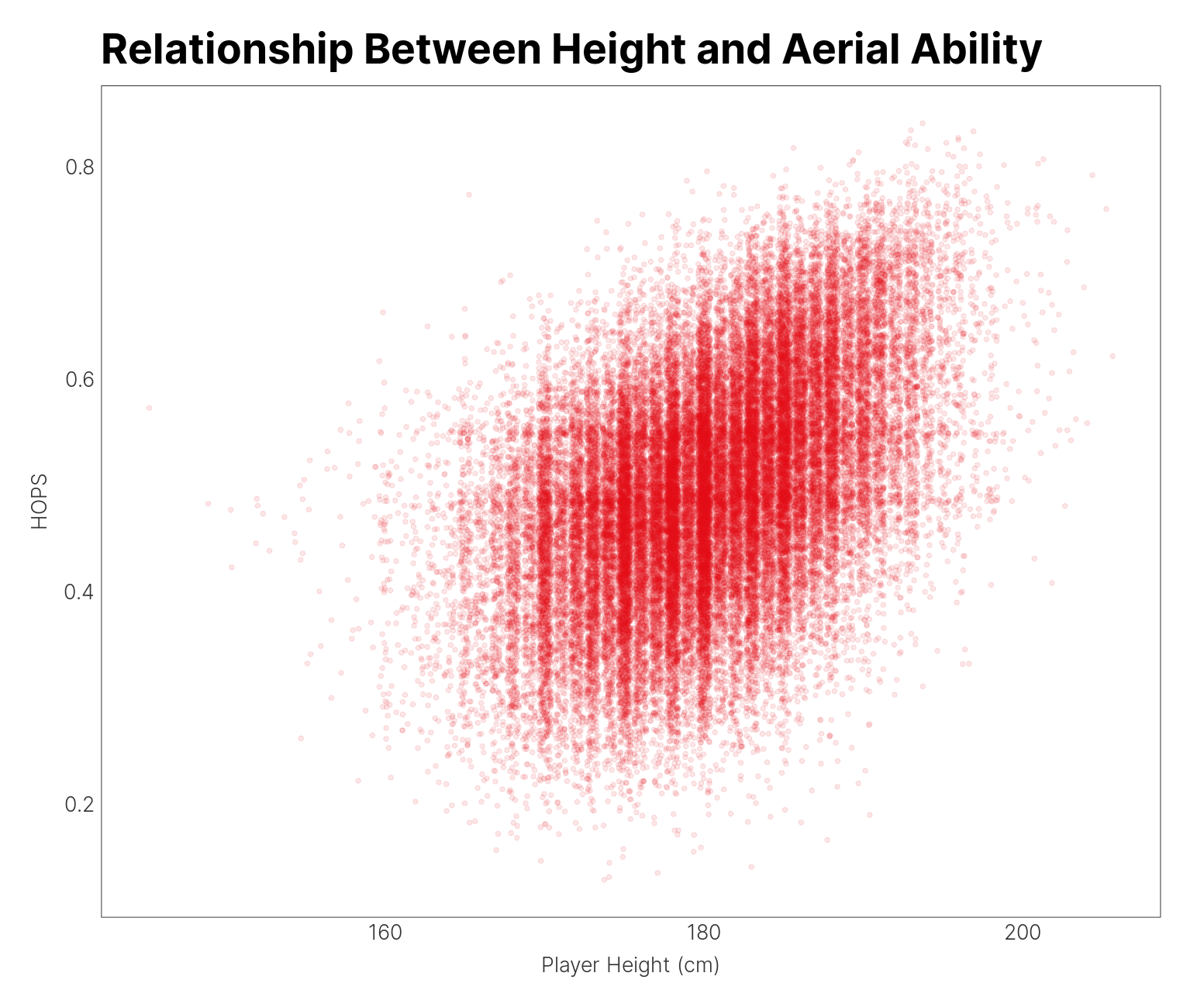The remainder of the article is an excerpt of the white paper for HOPS, made available to customers via our customer support tool, Hudl Statsbomb Assist.
HOPS is a model that measures a player's ability to win aerial duels.
Previously, we have offered two methods of measuring a player's aerial ability: Aerial Wins per 90 and Aerial Win %. Both provide some signal towards a player's true heading ability, but each has its flaws. Aerial Win % rewards players the same whether they beat Virgil van Dijk in the air or Lionel Messi, whereas Aerial Wins per 90 has an opportunity aspect and will punish players who don't get as many chances to compete in the air.
To mitigate these problems, we've developed HOPS to take into account the aerial ability of the opposing duellist in order to credit the winner of the duel appropriately. The model uses a modified version of the Glicko rating system, first developed by Mark Glickman to evaluate the performance of chess players, which weights recent duels more heavily than duels made in seasons past and also increases the uncertainty of the rating when a player goes a long time without making a duel, such as when a player suffers a serious injury.
The model output provides a HOPS rating, an upper bound, a lower bound, and a probability of winning a duel against an average player. When we present HOPS, we use the latter number – the probability of the player winning an aerial duel against an average player - this is the HOPS Score. So when you look at HOPS, presented on a scale of 0 to 1, a score of 0.75 would mean that the player would be expected to win an aerial duel against an average player 75% of the time. A score of 0.35 would mean we'd expect the player to win the duel 35% of the time, and so on and so on.
This approach feels more intuitive, making it easier to know if a player is good or bad, and it's also easier to explain the number to managers or coaches.





